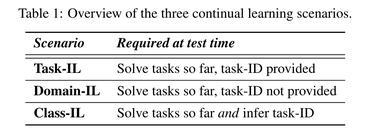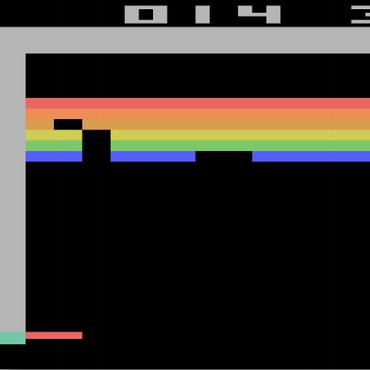Search Results for author: Yuanyi Zhong
Found 16 papers, 6 papers with code
Improving Equivariance in State-of-the-Art Supervised Depth and Normal Predictors
1 code implementation • ICCV 2023 • Yuanyi Zhong, Anand Bhattad, Yu-Xiong Wang, David Forsyth
Dense depth and surface normal predictors should possess the equivariant property to cropping-and-resizing -- cropping the input image should result in cropping the same output image.
Contrastive Learning Relies More on Spatial Inductive Bias Than Supervised Learning: An Empirical Study
no code implementations • ICCV 2023 • Yuanyi Zhong, Haoran Tang, Jun-Kun Chen, Yu-Xiong Wang
Though self-supervised contrastive learning (CL) has shown its potential to achieve state-of-the-art accuracy without any supervision, its behavior still remains under investigated by academia.
Do Pre-trained Models Benefit Equally in Continual Learning?
1 code implementation • 27 Oct 2022 • Kuan-Ying Lee, Yuanyi Zhong, Yu-Xiong Wang
Existing work on continual learning (CL) is primarily devoted to developing algorithms for models trained from scratch.
Is Self-Supervised Learning More Robust Than Supervised Learning?
no code implementations • 10 Jun 2022 • Yuanyi Zhong, Haoran Tang, Junkun Chen, Jian Peng, Yu-Xiong Wang
Our insight has implications in improving the downstream robustness of supervised learning.
SIRfyN: Single Image Relighting from your Neighbors
no code implementations • 8 Dec 2021 • D. A. Forsyth, Anand Bhattad, Pranav Asthana, Yuanyi Zhong, YuXiong Wang
Novel theory shows that one can use similar scenes to estimate the different lightings that apply to a given scene, with bounded expected error.
Pixel Contrastive-Consistent Semi-Supervised Semantic Segmentation
no code implementations • ICCV 2021 • Yuanyi Zhong, Bodi Yuan, Hong Wu, Zhiqiang Yuan, Jian Peng, Yu-Xiong Wang
We leverage the pixel-level L2 loss and the pixel contrastive loss for the two purposes respectively.
Coordinate-wise Control Variates for Deep Policy Gradients
no code implementations • 11 Jul 2021 • Yuanyi Zhong, Yuan Zhou, Jian Peng
The control variates (CV) method is widely used in policy gradient estimation to reduce the variance of the gradient estimators in practice.
DAP: Detection-Aware Pre-training with Weak Supervision
1 code implementation • CVPR 2021 • Yuanyi Zhong, JianFeng Wang, Lijuan Wang, Jian Peng, Yu-Xiong Wang, Lei Zhang
This paper presents a detection-aware pre-training (DAP) approach, which leverages only weakly-labeled classification-style datasets (e. g., ImageNet) for pre-training, but is specifically tailored to benefit object detection tasks.
Shaping Deep Feature Space towards Gaussian Mixture for Visual Classification
no code implementations • 18 Nov 2020 • Weitao Wan, Jiansheng Chen, Cheng Yu, Tong Wu, Yuanyi Zhong, Ming-Hsuan Yang
In this work, we propose a Gaussian mixture (GM) loss function for deep neural networks for visual classification.
Efficient Competitive Self-Play Policy Optimization
no code implementations • 13 Sep 2020 • Yuanyi Zhong, Yuan Zhou, Jian Peng
Reinforcement learning from self-play has recently reported many successes.
Boosting Weakly Supervised Object Detection with Progressive Knowledge Transfer
1 code implementation • ECCV 2020 • Yuanyi Zhong, Jian-Feng Wang, Jian Peng, Lei Zhang
In this paper, we propose an effective knowledge transfer framework to boost the weakly supervised object detection accuracy with the help of an external fully-annotated source dataset, whose categories may not overlap with the target domain.
Disentangling Controllable Object through Video Prediction Improves Visual Reinforcement Learning
no code implementations • 21 Feb 2020 • Yuanyi Zhong, Alexander Schwing, Jian Peng
In many vision-based reinforcement learning (RL) problems, the agent controls a movable object in its visual field, e. g., the player's avatar in video games and the robotic arm in visual grasping and manipulation.
Sequence Modeling of Temporal Credit Assignment for Episodic Reinforcement Learning
1 code implementation • 31 May 2019 • Yang Liu, Yunan Luo, Yuanyi Zhong, Xi Chen, Qiang Liu, Jian Peng
Recent advances in deep reinforcement learning algorithms have shown great potential and success for solving many challenging real-world problems, including Go game and robotic applications.
Anchor Box Optimization for Object Detection
no code implementations • 2 Dec 2018 • Yuanyi Zhong, Jian-Feng Wang, Jian Peng, Lei Zhang
In this paper, we propose a general approach to optimize anchor boxes for object detection.
Rethinking Feature Distribution for Loss Functions in Image Classification
2 code implementations • CVPR 2018 • Weitao Wan, Yuanyi Zhong, Tianpeng Li, Jiansheng Chen
We propose a large-margin Gaussian Mixture (L-GM) loss for deep neural networks in classification tasks.
Towards End-to-End Face Recognition through Alignment Learning
no code implementations • 25 Jan 2017 • Yuanyi Zhong, Jiansheng Chen, Bo Huang
Although these methods differ essentially in many aspects, a common practice of them is to specifically align the facial area based on the prior knowledge of human face structure before feature extraction.









